

Bryant Park is a public park of the City of New York and a New York City Scenic Landmark, designated by the Landmarks Preservation Commission in 1974. The park has undergone three major transformations of design since its origin as Reservoir Square in 1842 and has been put to myriad uses.
Prior to its existence as a public park, the site served as a 1776 battleground for George Washington's troops as they fled British forces. Later it was a graveyard for paupers. In 1842, when the Croton Reservoir was constructed on the land now occupied by the New York Public Library, the site behind the reservoir was designated 'Reservoir Square' and used as a public space.
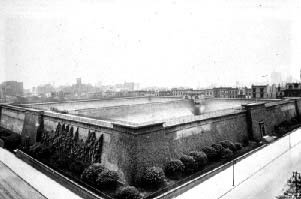
In 1853, the Crystal Palace, a glass and steel hall built for the first World's Fair, was erected here,
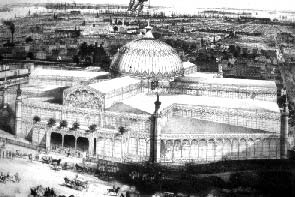
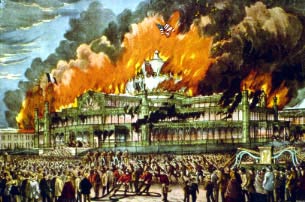
During the Civil War, Union troops drilled and camped in the square. The area was renamed 'Bryant Park' in 1884 to honor the memory of William Cullen Bryant (1794-1878), editor, poet, and leading advocate of the creation of New York's Central Park.
The park's next transformation began in 1899 when the reservoir was demolished to make way for the New York Public Library, which opened in 1911. Architect Thomas Hastings set the basic park design with a raised terrace behind the library which connected with the front terrace and terminated in two stone park houses. The park houses served as restrooms.
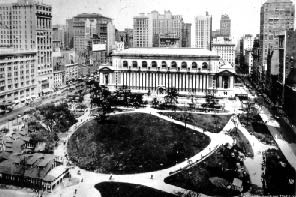
A 1920's period of decline, brought on by neglect and the effects of Sixth Avenue subway construction, prompted the Architects' Emergency Committee to open a 1933 competition for rejuvenation of the park to architects idled by the Depression. Lusby Simpson of Queens produced the winning design, and it was implemented within a year by the Parks Department under its new Commissioner Robert Moses, with Aymar Embury II serving as architect to the department. The design featured a 300 by 215 foot Great Lawn by Gilmore Clark, promenades planted with London plane paralleling the lawn. In 1936, a wrought-iron fence enclosure was added with cast-iron embellishments fabricated by New York's J.W. Fiske Ironworks.
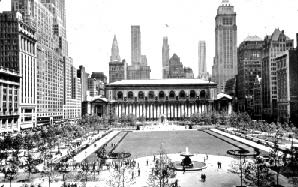
Until World War II, the park was sometimes used as an open-air reading room of the New York Public Library. By 1974, when it was designated a scenic landmark by the Landmarks Preservation Commission, Bryant Park had again slipped into the shadows.
The further decline in park conditions in the 1970's led to the founding of the Bryant Park Restoration Corporation by the Rockefeller brothers. Daniel A. Biederman, then a 26-year old systems consultant who was also serving as chairman of the local community planning board, was selected by the Rockefellers and the New York Public Library to head up the new company. He and Andrew Heiskell, Chairman of the Library, co-founded BPRC on January 3, 1980. Biederman devised a plan for the private management and funding of the park. The landscape, based on the theories of the urbanist William H. Whyte, Jr., aimed at restoring good activity to the park. The landscape architects were Hanna/Olin Ltd., and the design of the park houses were executed by the architectural firm of Hardy Holzman Pfieffer & Associates. The new Bryant Park opened in 1992 after construction that included 84 miles of shelving in two levels of underground storage space for the library. The popularity of the new park confirms Whyte's findings in Street Life Project - What city people seek in public spaces are other people, comfort, and care, not seclusion and refuge.


